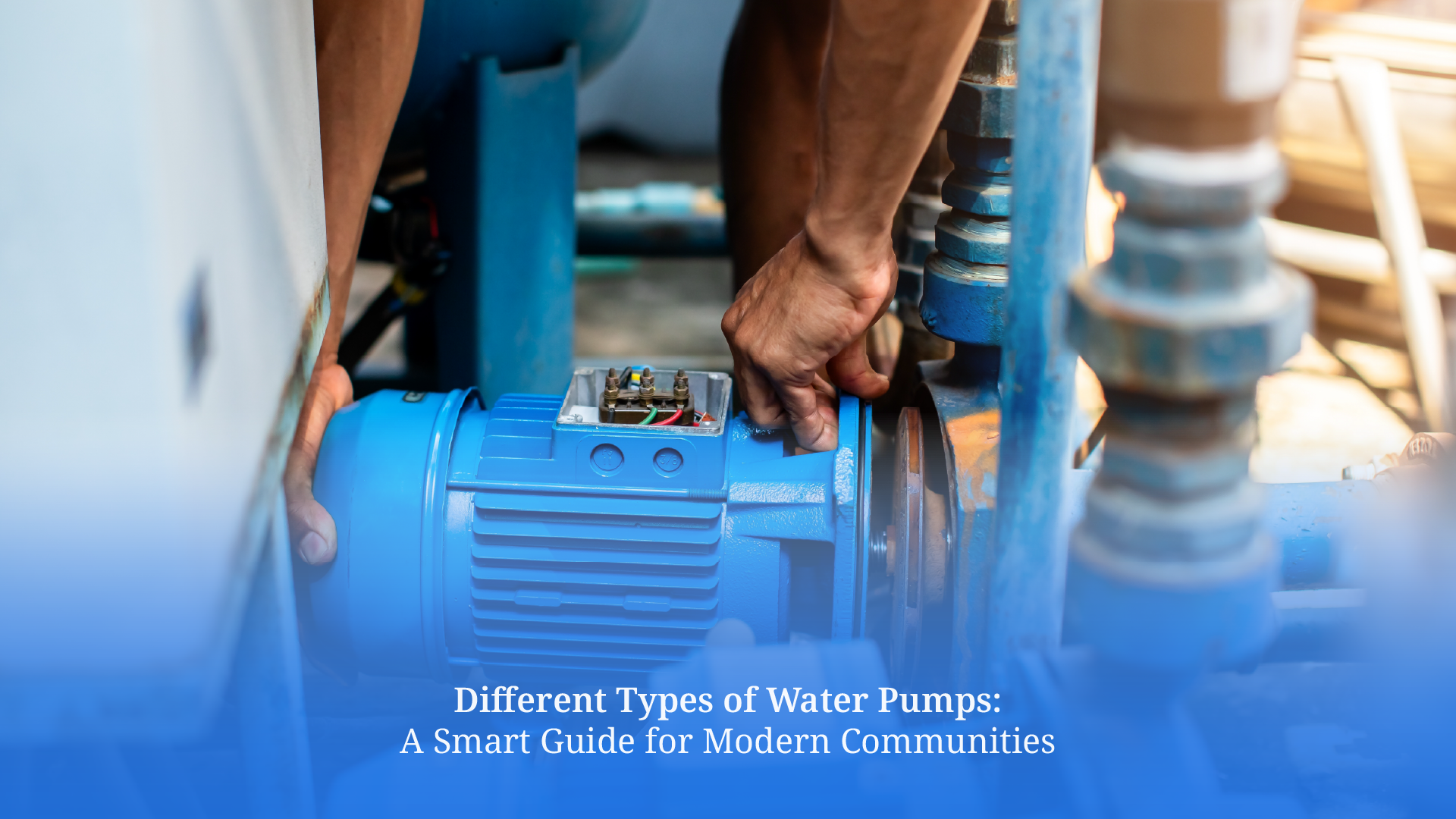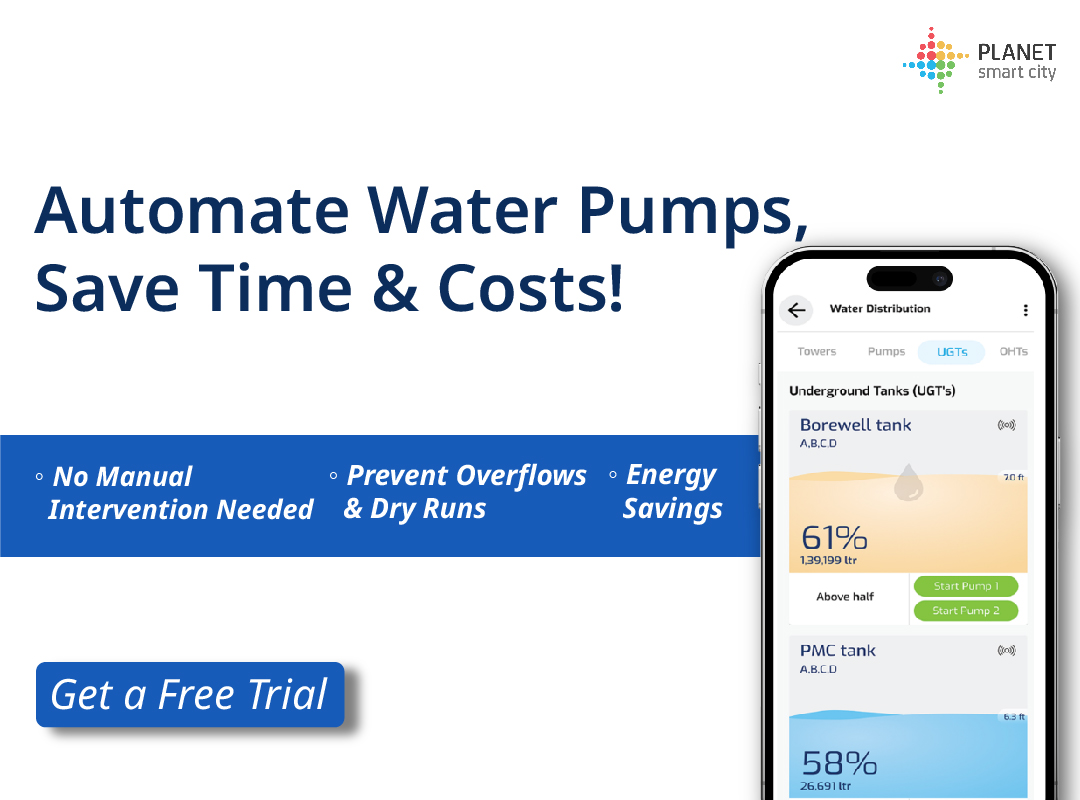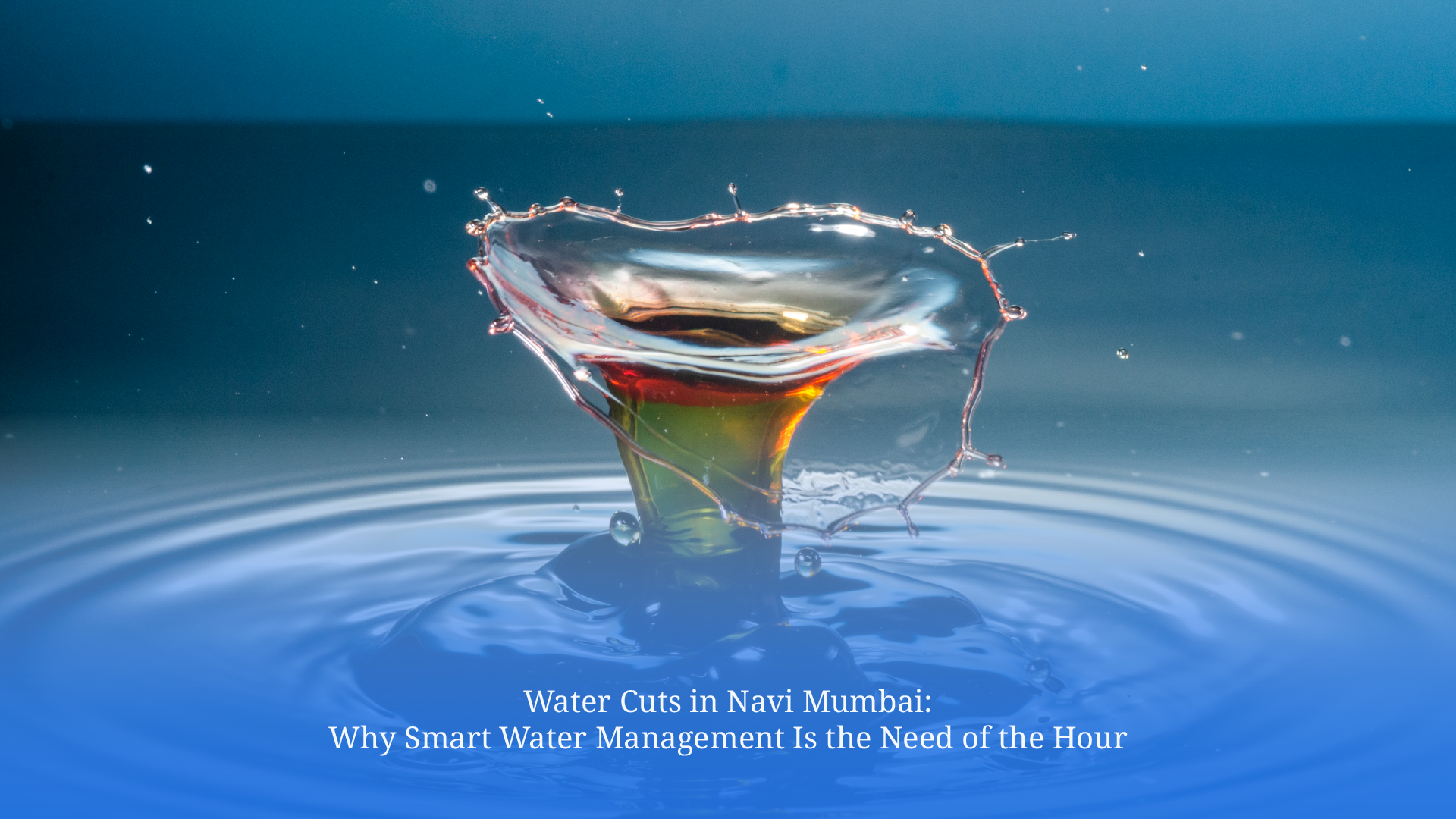Different Types of Water Pumps: A Smart Guide for Modern Communities

Water pumps are essential to residential infrastructure, powering everything from tank refills to garden irrigation. Yet, poor pump selection can lead to noise, water wastage and high maintenance. Understanding the different types of pumps used in water supply helps avoid these issues. With proper planning, societies can ensure consistent performance without overspending on unsuitable systems. Here are the various types of water pumps.
What Are the Different Types of Water Pumps?
In modern housing communities, a reliable water supply is crucial, and different types of pumps serve specific needs. Some of them are:
-
Self-Priming Regenerative Pumps
What it is:
These types of water pumps have impellers that rotate in a closed casing, allowing water to recirculate and create the pressure needed to lift water. They can self-prime, meaning they do not require manual filling before operation.
Typical use in housing societies:
They are a practical option for overhead tank refills, shallow source pumping and terrace-level water delivery. Their compact size and ease of use make them suitable for mid-rise buildings with modest water demands.
-
Centrifugal Pumps
What it is:
Centrifugal pumps use an impeller to transfer rotational energy into water flow. They work best when water has to be moved continuously over short to medium distances.
Typical use in housing societies:
These types of water pumps are commonly used for garden irrigation, car wash points and in basement pump rooms where clean water flow is required. They are also preferred where the electricity supply is stable and pressure consistency is needed.
-
Submersible Pumps
What it is:
Submersible pumps are placed inside water sources such as borewells and operate fully submerged. They use a sealed motor, which helps them stay protected from water and run quietly.
Typical use in housing societies:
They are ideal for high-rise buildings or deep borewells where vertical suction height is significant. Their quiet operation and high efficiency make them a top choice for daily water lifting in large communities.
-
Borewell Compressor Pumps
What it is:
These types of water pumps use air pressure to lift water from deep and narrow borewells, especially when other pumps are not efficient. They can handle low-yield or muddy water conditions better than standard pumps.
Typical use in housing societies:
They are often used in older or low-water-yield borewells where conventional pumps fail to perform. They provide a reliable backup option for drawing water from deeper, low-flow sources.
-
Pressure Booster Pumps
What it is:
These pumps automatically maintain consistent water pressure throughout a plumbing system. They come with sensors and a pressure tank that regulate when the pump turns on or off.
Typical use in housing societies:
They are commonly installed in high-rise apartments or villas where water pressure drops at higher floors. These pumps ensure uniform water pressure across taps, showers and appliances.


How to Choose Between the Different Types of Water Pumps?
Here are the main factors to assess while making this decision:
-
Water source type
Identify whether your water is coming from a borewell, shallow well or storage tank. This determines whether suction or pressure-based pumping is more suitable.
-
Vertical suction and delivery head
Measure the vertical distance from the water source to the pump and from the pump to the delivery point. Choosing the right pump head avoids both shortfall and overload issues.
-
Water quality
If your water contains silt, mud or other particles, avoid pumps made only for clean water. Choose pumps with non-clog impellers or protective filters.
-
Flow rate and usage demand
Calculate your society’s daily water requirement based on the number of residents, appliances and green areas. This ensures you do not oversize or undersize the pump.
Planet Smart City Advantage
Planet Smart City simplifies water management with a smart, integrated solution for housing societies. Instead of managing pumps manually, communities can monitor and control them through a connected IoT stack.
Our water management solution includes:
- Real-time water level sensors installed in tanks
- Smart pump controllers for automatic operation
- A mobile app for residents and facility teams to view status and control settings
- Alerts for tank overflow, dry run or abnormal pressure
- Performance logs to track usage and reduce waste
Implementation Checklist for Societies
Before upgrading or installing a new pump, use this checklist to guide your planning:
- Confirm the depth and type of your water source
- Review the electricity load availability and safety provisions
- Select the right pump type based on water quality and distance
- Explore app-based solutions for remote control and data tracking
- Assess installation space and access for maintenance
- Shortlist vendors with experience in different water pump types
- Plan an annual service contract for long-term reliability
Transforming Water Management for a Sustainable Future
Knowing the different types of water pumps and their uses helps societies avoid costly errors and inefficiencies. With the right pump and smart control systems, communities can reduce water waste and simplify daily management. Planet Smart City offers connected solutions with smart sensors and app-based controls. To explore smarter water infrastructure for your society, book a free demo with Planet Smart City.




